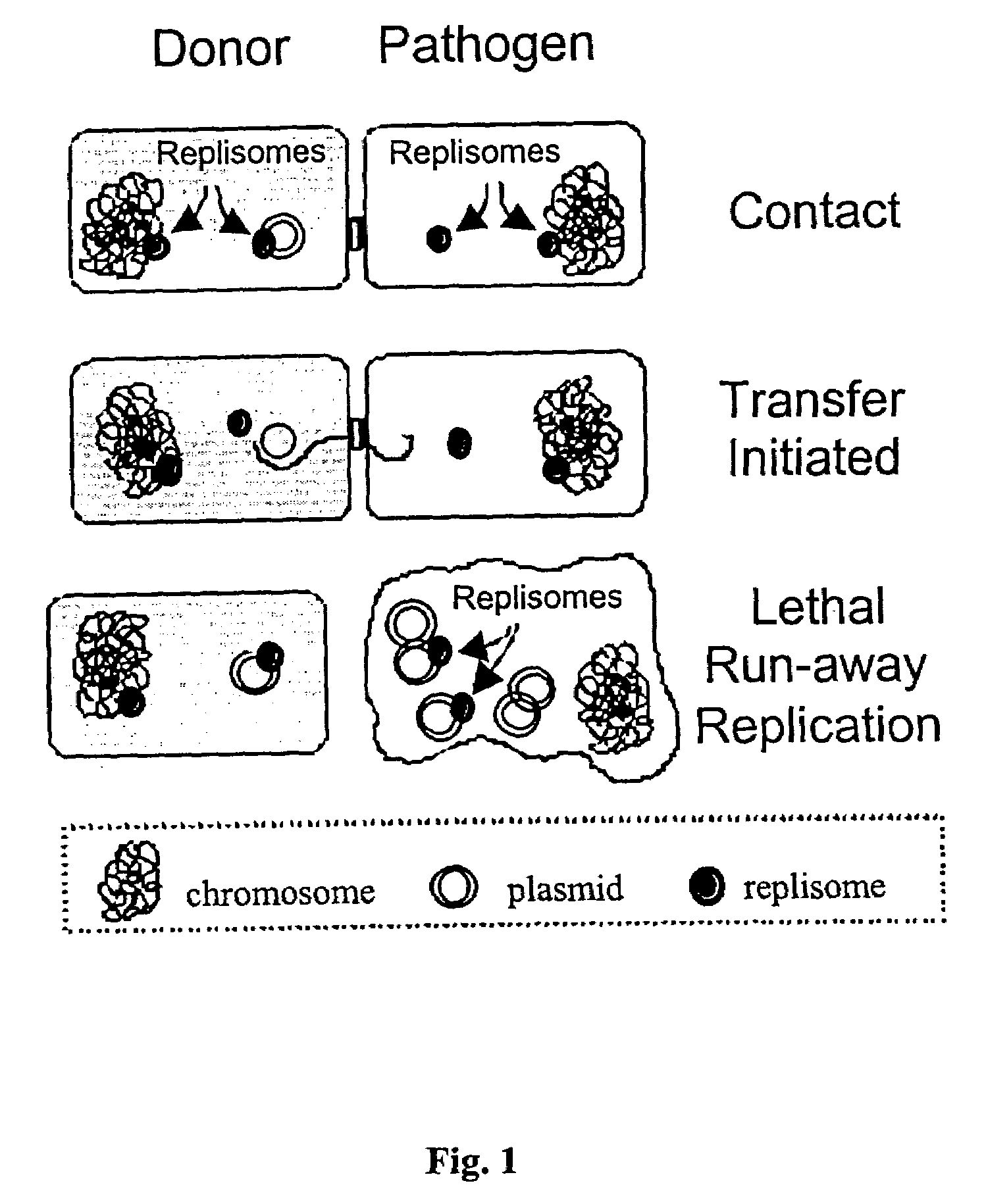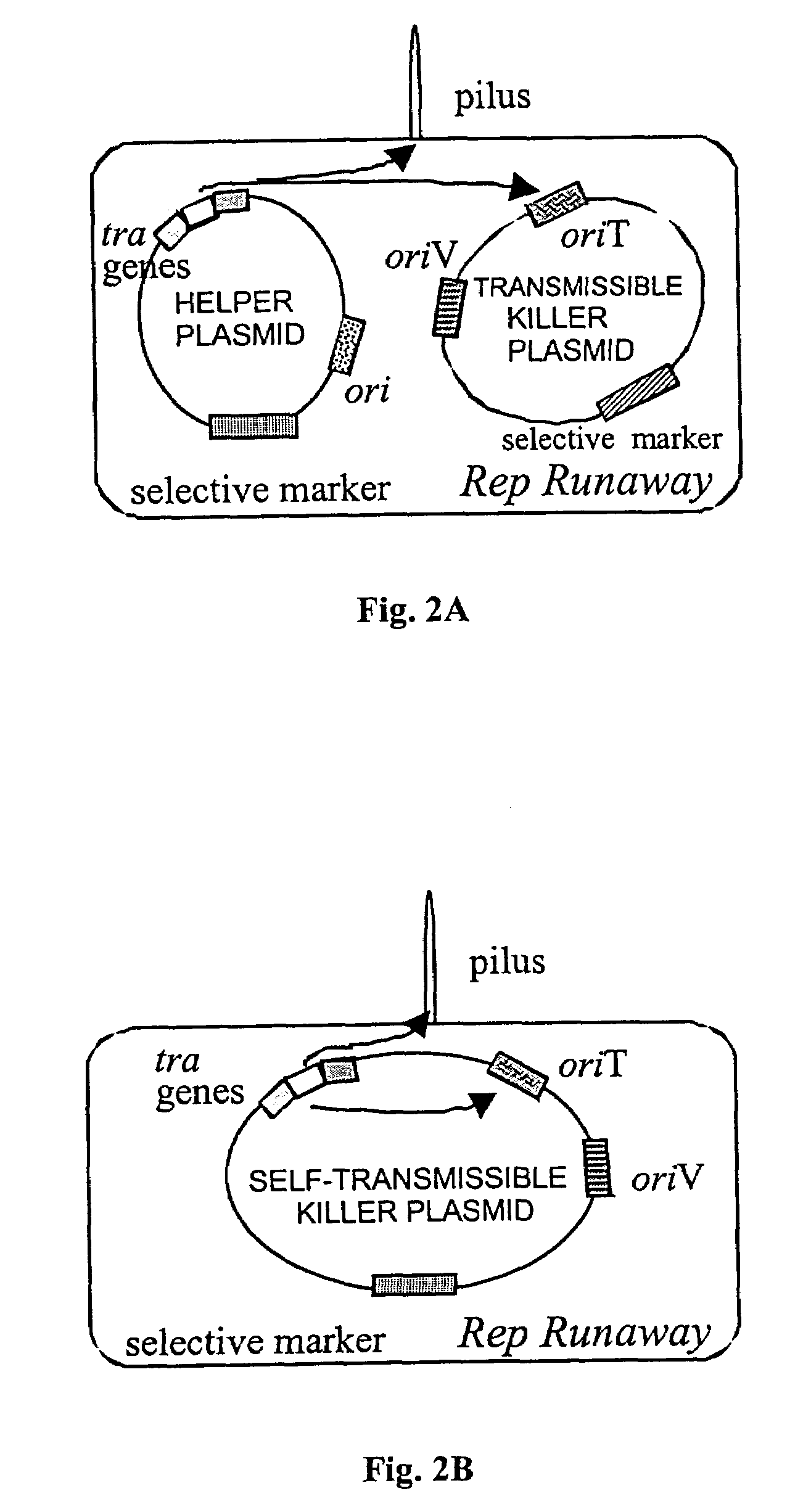Anti-microbial biotherapeutic agents: alternatives to conventional pharmaceutical antibiotics
a biotherapeutic agent and anti-microbial technology, applied in the field of bacteriaology, can solve the problems of increasing the emergence of antibiotic-resistant strains of pathogenic bacteria, unwelcome consequences, and no known method of avoiding the selection of antibiotic-resistant bacterial mutants, and achieve the effect of efficient transfer and effective alternativ
- Summary
- Abstract
- Description
- Claims
- Application Information
AI Technical Summary
Benefits of technology
Problems solved by technology
Method used
Image
Examples
example 1
Preparation of Runaway Replication
[0059]Plasmid R6K s an Escherichia coli conjugative plasmid. Replication of R6K derivatives containing its oriV called γ ori requires a Rep protein, π, which is encoded by the plasmid's pir gene. π protein is bifunctional in replication; it acts as an activator of replication at low cellular levels and an inhibitor of replication at elevated levels. For a review of R6K replication and its control by π protein, see Filutowicz & Rakowski (1998) Gene 223, 195–204.
[0060]Using site-directed mutagenesis, the inventor has obtained the following three types of mutations within the pir gene:[0061](1) double amino acid substitution: pro106leu, phe107ser (numbering of residues according to Stalker et al. (1982) J. Mol. Biol. 161: 33–43).[0062](2) deletion of codons 106 and 107; and[0063](3) deletion of codons 105, 106 and 107.
The mutated pir genes were combined with the γ ori in two locations. In one location, the mutant gene was contai...
example 2
Bacterial Cells Transformed with Plasmids
Containing Mutated pir and γ ori in cis are Killed
[0064]Escherichia coli cells were transformed with either (1) the plasmids containing a mutated pir gene and the γ ori in trans; or (2) a plasmid containing a mutated pir gene and the γ ori in cis.
[0065]In transformed cells containing the mutant pir and the γ ori in trans, the copy number of the γ ori plasmid was increased 20- to 25-fold in comparison to wild-type pir controls. Cells transformed with the mutant pir and the γ ori in cis were killed by the runaway replication of γ ori. The occurrence of the runaway phenotype when mutant pir is in cis to the ori but not in trans is believed to be caused by the enhanced effect of the origin activation and translation of nascent π protein occurring next to each other.
PUM
| Property | Measurement | Unit |
|---|---|---|
| drug resistance | aaaaa | aaaaa |
| selective pressure | aaaaa | aaaaa |
| antibiotic resistance | aaaaa | aaaaa |
Abstract
Description
Claims
Application Information
 Login to View More
Login to View More - R&D
- Intellectual Property
- Life Sciences
- Materials
- Tech Scout
- Unparalleled Data Quality
- Higher Quality Content
- 60% Fewer Hallucinations
Browse by: Latest US Patents, China's latest patents, Technical Efficacy Thesaurus, Application Domain, Technology Topic, Popular Technical Reports.
© 2025 PatSnap. All rights reserved.Legal|Privacy policy|Modern Slavery Act Transparency Statement|Sitemap|About US| Contact US: help@patsnap.com


